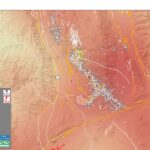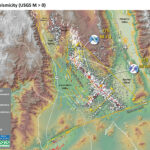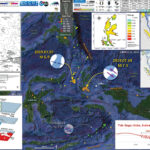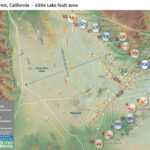I have reviewed a small portion of the literature for the tectonics of the northern Eastern California shear zone, Owens Valley fault, Garlock fault, etc. I have a basic knowledge of this region and have attended several Pacific Cell Friends…
Earthquake Report: Ridgecrest Update #2
Summary of Reports for the Ridgecrest Earthquake Sequence The original Earthquake Report for this widely felt sequence is here. The update #1 Earthquake Report for this widely felt sequence is here. The update #2 Earthquake Report for this widely felt…
Earthquake Report: Halmahera, Indonesia
Well, yesterday I was preparing some updates to the Ridgecrest Earthquake following my field work with my colleagues at the California Geological Survey (where I work) and the U.S. Geological Survey. We spent the week documenting surface ruptures associated with…
Earthquake Report: Ridgecrest Update #1
Summary of Reports for the Ridgecrest Earthquake Sequence The original Earthquake Report for this widely felt sequence is here. The update #1 Earthquake Report for this widely felt sequence is here. The update #2 Earthquake Report for this widely felt…
Earthquake Report: Ridgecrest, CA
Summary of Reports for the Ridgecrest Earthquake Sequence The original Earthquake Report for this widely felt sequence is here. The update #1 Earthquake Report for this widely felt sequence is here. The update #2 Earthquake Report for this widely felt…





